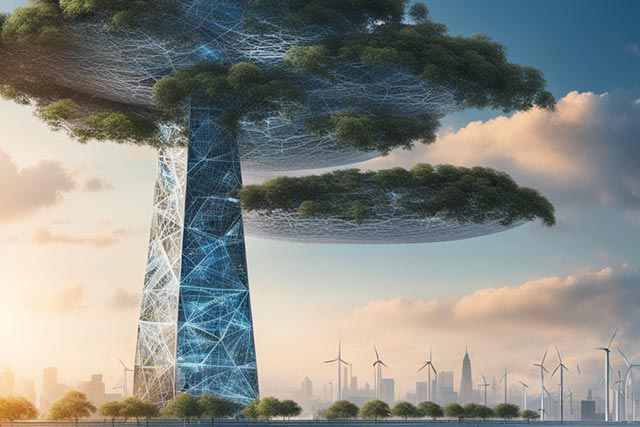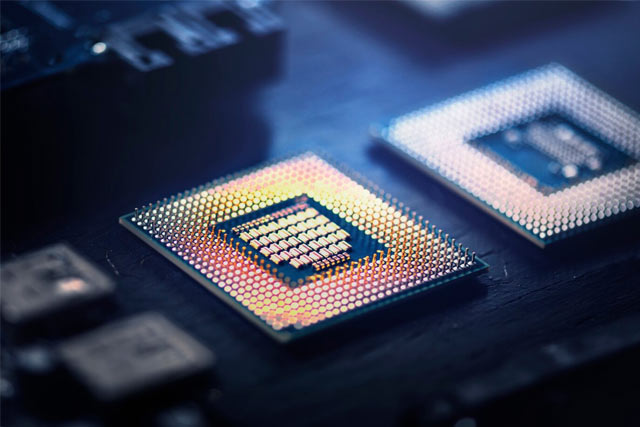In an era where the term “the cloud” conjures images of an ethereal, data-filled expanse, it’s easy to forget its genuine physical footprint on our planet. The vast data centers underpinning our digital world consume immense amounts of energy, much of which is still derived from fossil fuels. But there’s hope on the horizon, and it comes in the form of a revolution: AI at the edge.
Let’s delve into the uncharted territory of data centers, the green energy movement, and the game-changing potential of AI on the edge of ambiguity.
The Hidden Energy Price Tag

When we surf the web, stream our favorite shows, or upload endless selfies, dismissing the energy that powers these digital luxuries is easy. But the hard truth is that the colossal data centers of tech giants, such as Google, Meta, Apple, and Amazon, gulp down 20 to 100 megawatts of electricity each year—enough to power entire neighborhoods. Despite ambitious claims of using renewables, data centers are still heavily reliant on fossil fuels, and this energy demand is poised to grow.
Projections suggest data centers account for 4% of global electricity consumption by 2030. It’s a concerning statistic that highlights the pressing need for change.
The Edge Emerges

One transformative path that’s emerged is the world of edge computing. Imagine a world where computing isn’t confined to colossal, distant data centers but instead exists in smaller-scale devices, sensors, and servers scattered across factories and retail outlets where the action unfolds.
This isn’t just a technological shift; it’s a giant leap towards a sustainable, energy-efficient computing landscape. Edge computing minimizes the need for data transmission, reducing energy consumption. Most edge devices are significantly more energy-efficient than their data center counterparts. When data is processed closer to where it’s generated, latency decreases, and energy is saved. It’s a win-win.
AI at the Edge: A Game Changer

Now, you might wonder if there’s a catch. With the surge in AI and machine learning demand, massive language model data centers are again in the spotlight. These energy-hungry algorithms need powerful GPUs and vast server space, seemingly at odds to reduce data center energy consumption.
But wait! There’s a twist in the tale. Forward-thinking companies are introducing “AI at the edge” solutions designed to run AI applications outside data centers. This reduces the overall energy demand and emissions. It’s like sharing the load, lightening the burden on data centers.
The Edge Advantage: Low-Power Devices

Edge computing not only reduces energy consumption but also leverages low-power devices. The localized processing of data means that information is handled closer to where it’s needed. The transition to edge computing enhances efficiency, enables real-time decision-making, and fosters innovation.
One standout player in this field is SiMa.ai, based in sunny San Diego, California. They’ve introduced Palette Edgematic, a platform that empowers enterprises to rapidly build and deploy AI applications on edge devices. And the results? Impressive. Even the U.S. military has experienced the benefits, with edge drone deployment dramatically boosting video capture and analysis.
Lenovo, typically known for PCs and devices, is stepping into the ring with its TruScale for Edge and AI service. This offering combines hardware with AI solutions designed for various environments. Lenovo’s estimates suggest that 75% of computing power is headed towards the edge, emphasizing the significance of this shift.
Splunk’s Take on Thick and Thin Edge

The enterprise data software firm Splunk introduces a fascinating concept: “thick edge” and “thin edge.” Thick edge involves processing data on-site, while thin edge deploys smaller, lower-powered sensors with most processing happening in the cloud.
Splunk’s Edge Hub is designed for thin edge deployments, offering the flexibility to gather data from the edge and refine AI models. Additionally, keeping humans in the decision-making loop saves power and ensures AI positively impacts real-world environments.
A Brighter, Greener Future

As the adoption of AI continues to grow, there’s no denying that power-intensive AI models will increase energy consumption. But with the implementation of edge solutions, enterprises can optimize power consumption, reduce their carbon footprint, and make a meaningful contribution to a greener, more energy-efficient future.
So, what’s next for AI at the edge? With the right approach, AI deployments at the border could lead to further power consumption optimizations, helping enterprises tread more lightly on our planet.
Conclusion
AI at the edge of ambiguity isn’t just a buzzword—it’s a tangible solution to the data center energy crisis. It’s a bridge to a sustainable future where digital dreams can thrive without compromising our planet. It’s time to embrace the edge and unlock the power of AI in the real world.